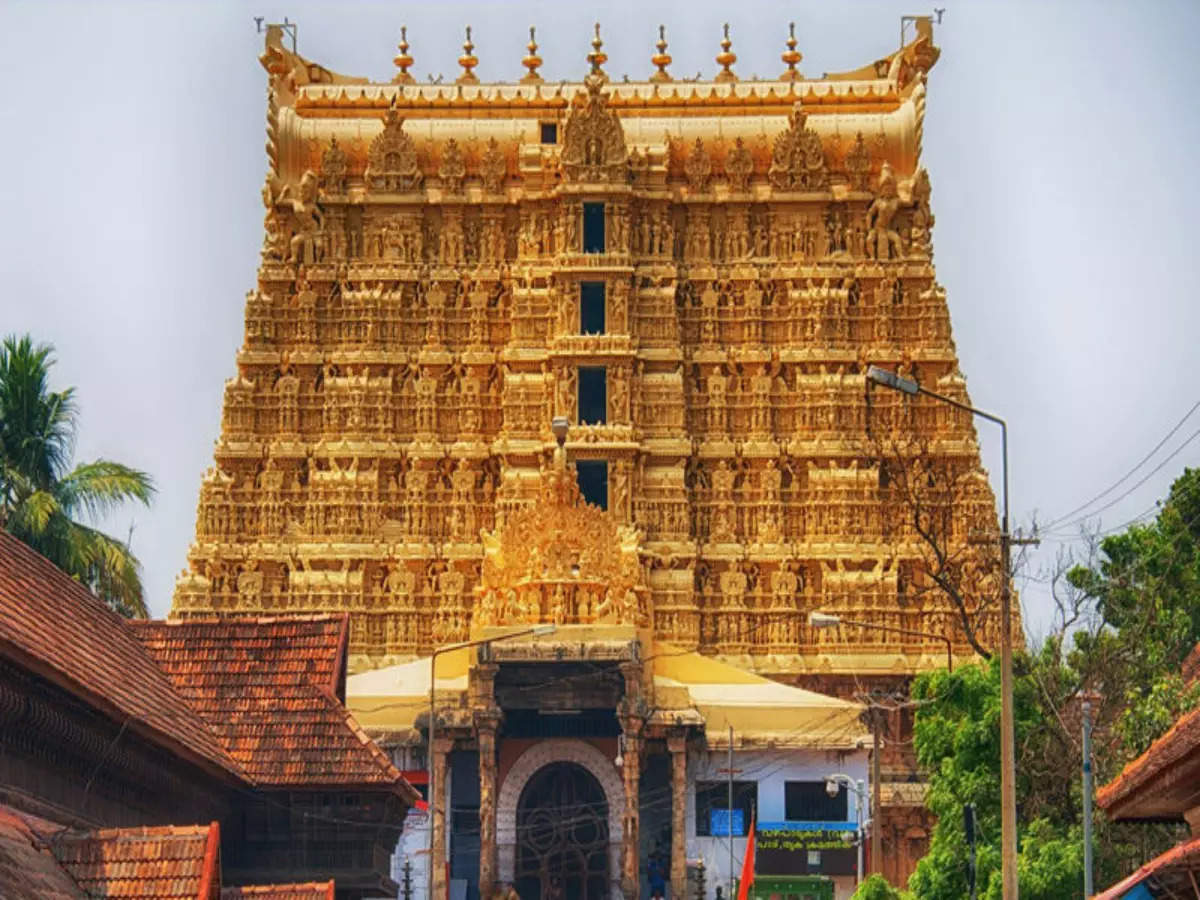About Padmanabhaswamy Temple
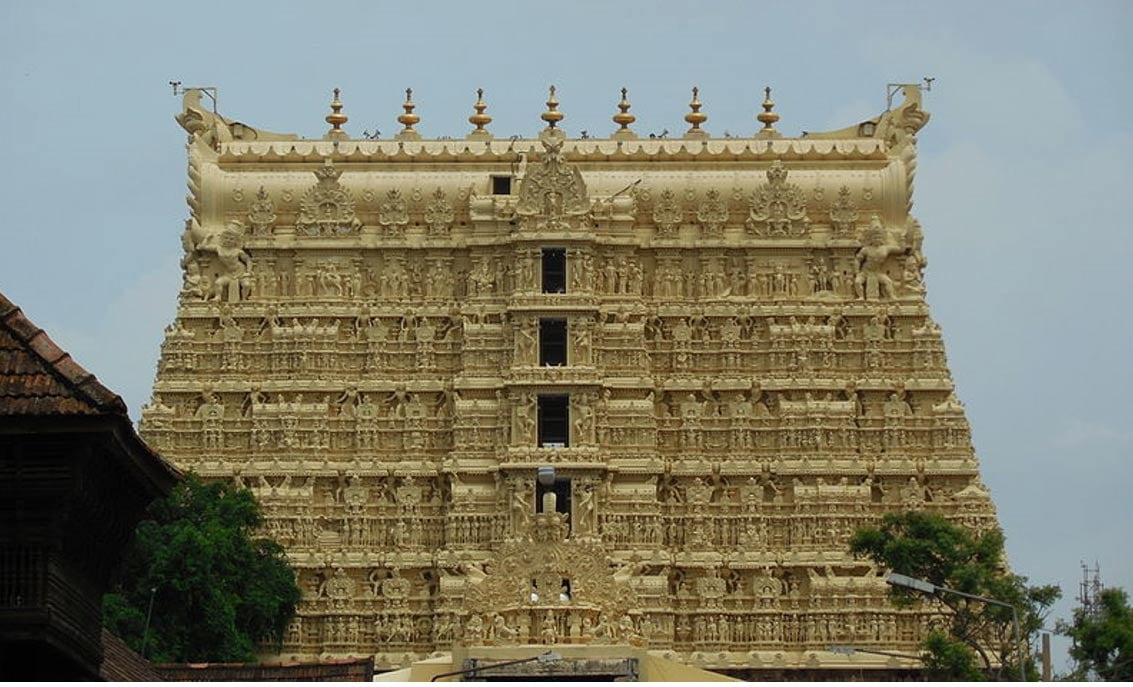
"Journey into Divinity: Discovering the Sree Padmanabhaswamy Temple"
Here are some critical details about the Sree Padmanabhaswamy Temple:
- Architecture: The temple is known for its magnificent Dravidian-style architecture. It features intricate carvings, gopurams (towering gateways), and a seven-tiered raja gopuram at the entrance. The sanctum sanctorum houses the idol of Lord Padmanabhaswamy in a reclining posture on the serpent Ananta.
- History: The origins of the temple date back to ancient times, and it has been mentioned in texts and scriptures as early as the 8th century. The temple was rebuilt and expanded over centuries by different rulers, including the kings of the Travancore dynasty.
- Vault Controversy: The temple gained significant attention in recent years due to the discovery of hidden underground vaults within its premises. The vaults, labeled from A to K, contain immense wealth, including gold, precious stones, jewelry, and other valuable artifacts. The estimated value of the treasures found in the vaults is worth billions of dollars. The Supreme Court of India ordered the inventory and assessment of the contents of the vaults to ensure their preservation and protection.
- Temple Practices: The Sree Padmanabhaswamy Temple follows strict customs and rituals. Only Hindus are allowed entry into the temple. Non-Hindus are not permitted to enter the innermost sanctum. The temple follows traditional rituals and daily worship ceremonies, attracting a large number of devotees and visitors.
- Festivals: The temple celebrates several festivals with great enthusiasm. The annual festival called Alpashy festival or Laksha Deepam, held in the Malayalam month of Thulam (October/November), is the most prominent. During this festival, the entire temple is illuminated with oil lamps, and a grand procession with the deity takes place.
- Dress Code: There is a strict dress code for visitors to the temple. Men must wear a dhoti (a traditional garment) or mundu with or without an angavastram (a cloth worn over the shoulders). Women are expected to wear sarees, half sarees, or long skirts with blouses. The temple authorities provide facilities for visitors to rent appropriate clothing if needed.
The Sree Padmanabhaswamy Temple is not only a center of religious devotion but also a significant historical and cultural landmark in Kerala. Its architectural grandeur, rich heritage, and discovery of hidden treasures have made it a renowned pilgrimage site and a subject of fascination for people around the world.
Which God is in Padmanabhaswamy temple?
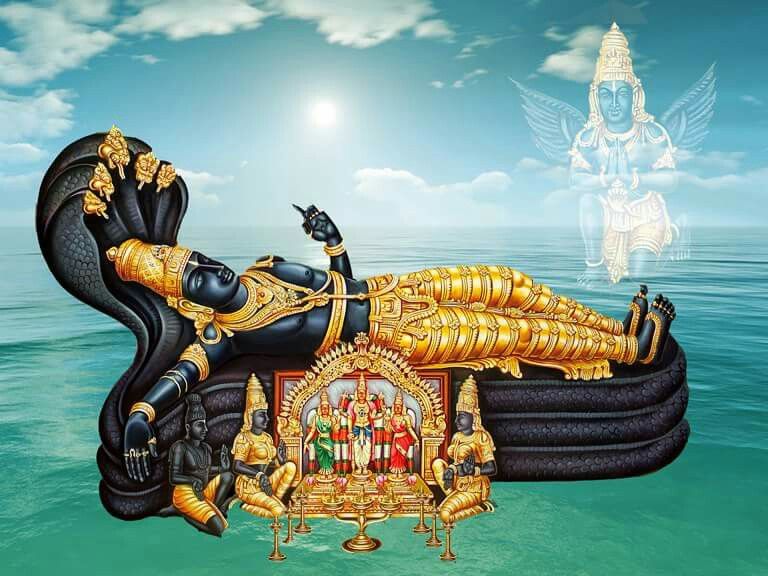
The presiding deity of the Sree Padmanabhaswamy Temple in Thiruvananthapuram, Kerala, India, is Lord Padmanabhaswamy. Lord Padmanabhaswamy is a form of Lord Vishnu, who is considered the preserver and sustainer in Hinduism.
Lord Padmanabhaswamy is depicted in a reclining posture on the serpent Ananta (also known as Adi Sesha). The idol of Lord Padmanabhaswamy is made of a combination of five metals known as "Panchaloha" and is adorned with jewels and a golden crown.
Devotees visit the Sree Padmanabhaswamy Temple to seek the blessings and divine grace of Lord Padmanabhaswamy. The temple holds great religious significance for the followers of Lord Vishnu and is considered one of the holiest shrines dedicated to Lord Padmanabhaswamy in the Vaishnavite tradition.
What is Sree Padmanabhaswamy temple famous for?
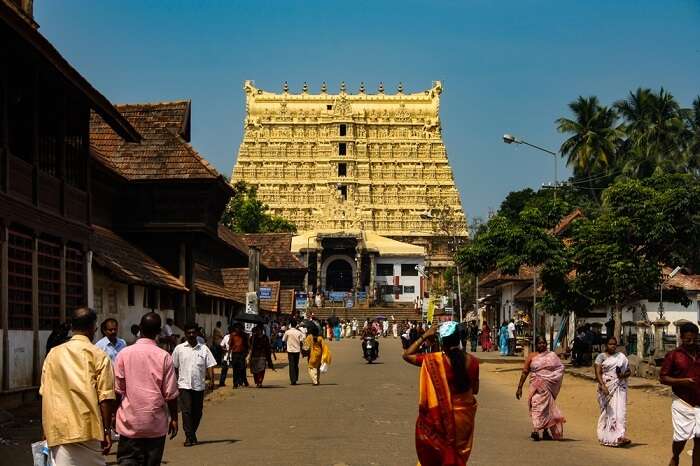
The Sree Padmanabhaswamy Temple is primarily famous for two reasons:
- Spiritual Significance: The temple is renowned for its religious and spiritual significance. It is considered one of the 108 Divya Desams, which are the holy abodes of Lord Vishnu according to the Vaishnavite tradition. Devotees from all over the world visit the temple to seek the blessings of Lord Padmanabhaswamy. The deity is depicted in a reclining posture on the serpent Ananta, which represents the cosmic ocean of eternity. The temple holds a special place in the hearts of the people of Kerala and is an important center for Hindu worship and rituals.
- Hidden Treasures: The temple gained international attention due to the discovery of hidden underground vaults filled with vast amounts of wealth. The vaults, labeled from A to K, contain a treasure trove of gold, precious stones, jewelry, and other valuable artifacts. The estimated value of the treasures found in the vaults is said to be worth billions of dollars, making it one of the wealthiest religious institutions in the world. The discovery of the hidden treasures brought the temple into the spotlight and sparked immense curiosity and intrigue among people worldwide.
The combination of its spiritual significance and the astonishing wealth found within its premises has made the Sree Padmanabhaswamy Temple famous both as a place of devotion and as a site of great historical and cultural significance.
How many years old is Sree Padmanabhaswamy temple?
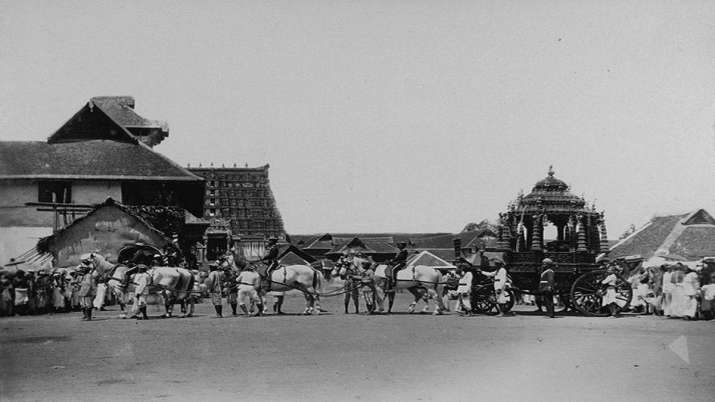
The exact age of the Sree Padmanabhaswamy Temple is uncertain, as its origins are believed to date back to ancient times. The temple has been mentioned in texts and scriptures that date as far back as the 8th century. Historical records suggest that the temple underwent several renovations and expansions over the centuries by different rulers and dynasties.
The present structure of the temple is believed to have been rebuilt and expanded during the reign of the Travancore dynasty, particularly under the patronage of King Marthanda Varma in the 18th century. However, the core sanctum and the deity's presence in the temple are believed to have existed long before that.
Considering the temple's historical and cultural significance, it can be said that the Sree Padmanabhaswamy Temple has a history spanning many centuries, with its roots likely extending back thousands of years.
What is the history of the Shree Padmanabha temple?
The history of the Shree Padmanabhaswamy Temple is deeply rooted in mythology and ancient legends. While the exact historical timeline of the temple is not well-documented, it is believed to have existed for several centuries.
According to mythology, the origins of the temple date back to the Treta Yuga (a mythical age in Hinduism). It is believed that the sage Divakara Muni, also known as Vilvamangalam, had a vision of Lord Vishnu reclining on the serpent Ananta in the form of Lord Padmanabhaswamy. Impressed by the divine vision, the sage consecrated the idol of Lord Padmanabhaswamy in the temple.
Historical records indicate that the temple received significant patronage and attention during the reign of the Travancore dynasty. It is said that the rulers of Travancore, particularly King Marthanda Varma (ruled 1729-1758), played a crucial role in the temple's reconstruction and expansion.
During the reign of Marthanda Varma, the temple faced threats from neighboring kingdoms. In a legendary battle, known as the Battle of Colachel (1741), Marthanda Varma defeated the Dutch East India Company and secured Travancore's independence. As a gesture of gratitude and devotion, Marthanda Varma dedicated his kingdom to Lord Padmanabhaswamy and declared himself the "Padmanabha Dasa" (servant of Lord Padmanabha). This act elevated the status of the temple and established it as a center of religious and cultural significance.
Over the centuries, the temple underwent renovations, additions, and maintenance by subsequent rulers and the Travancore royal family. The temple's architecture and structural features evolved, reflecting the influences of various dynasties and architectural styles.
In recent times, the temple gained significant attention due to the discovery of hidden underground vaults (known as "kallaras") within its premises. The vaults contained an astonishing amount of wealth, including gold, precious stones, and valuable artifacts, sparking worldwide curiosity and fascination.
The temple continues to be an important religious center for devotees of Lord Padmanabhaswamy, attracting thousands of pilgrims each year. It holds immense historical, cultural, and spiritual significance, making it a cherished and revered landmark in the state of Kerala and beyond.
What is not allowed in Padmanabhaswamy Temple?
The Sree Padmanabhaswamy Temple has certain rules and restrictions in place to maintain its sanctity and religious practices. Here are some of the things that are not allowed within the temple premises:
- Non-Hindus: Only Hindus are allowed entry into the temple. Non-Hindus are not permitted to enter the innermost sanctum or the core areas of the temple.
- Cameras and Electronic Devices: Visitors are not allowed to carry cameras, mobile phones, or any electronic devices inside the temple premises. This restriction is in place to ensure the sanctity of the temple and avoid distractions during worship.
- Footwear: Visitors are required to remove their footwear before entering the temple. There are designated areas or racks available for visitors to leave their footwear.
- Dress Code: The temple has a strict dress code for both men and women. Men must wear a dhoti (a traditional garment) or mundu with or without an angavastram (a cloth worn over the shoulders). Women are expected to wear sarees, half sarees, or long skirts with blouses. The temple authorities provide facilities for visitors to rent appropriate clothing if needed.
- Leather Items: Carrying leather items such as belts, bags, wallets, or any other items made of leather is prohibited within the temple premises.
- Photography and Videography: As mentioned earlier, cameras and mobile phones are not allowed inside the temple. Therefore, photography and videography inside the temple are strictly prohibited.
It is important for visitors to adhere to these guidelines and respect the customs and traditions of the temple. These restrictions are in place to maintain the religious atmosphere and ensure that the temple remains a sacred place of worship for devotees.
What is behind the 7th door of Padmanabhaswamy Temple?
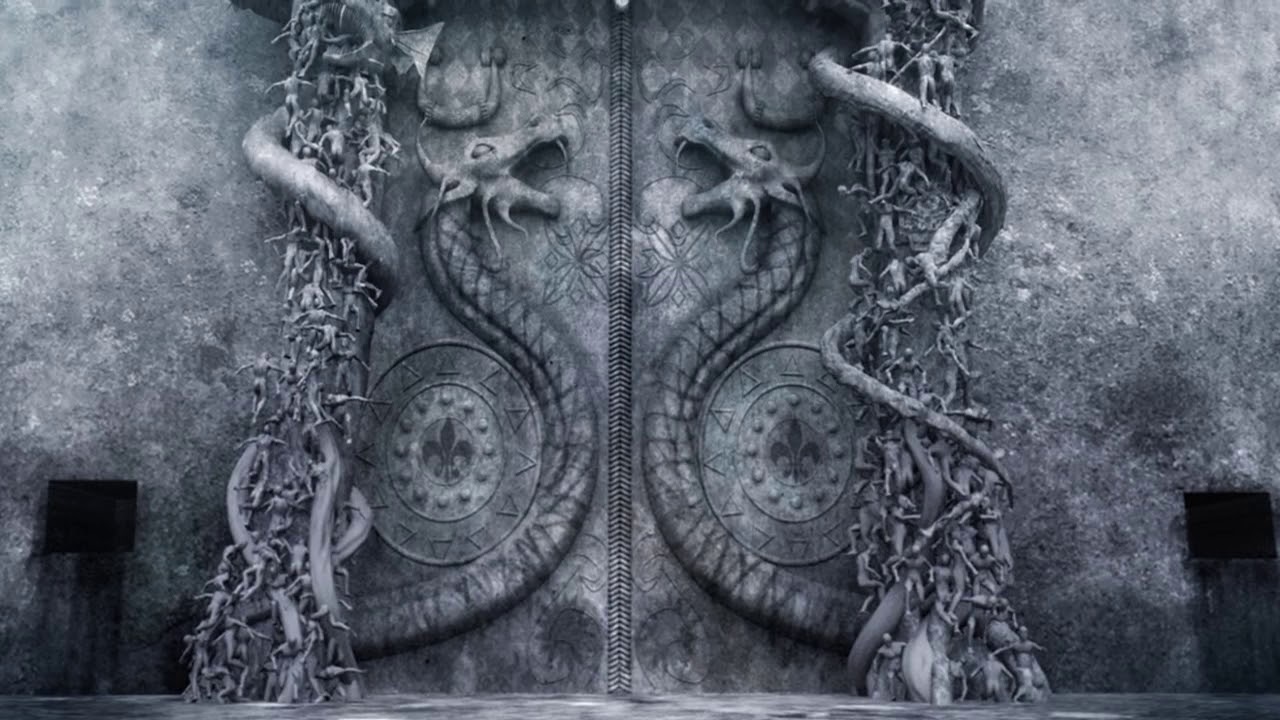
As an AI language model, I don't have real-time information or access to the latest updates. As of my knowledge cutoff in September 2021, the Sree Padmanabhaswamy Temple's vaults beyond the sixth door were not officially opened or accessed.
The temple's underground vaults gained significant attention due to the discovery of immense wealth in the initial five vaults (A to E). These vaults contained treasures worth billions of dollars, including gold, precious stones, jewelry, and artifacts. However, the contents behind the sixth vault (Vault F) were still unopened and unexplored at the time.
It is worth noting that the temple's vaults and their contents are managed by a trust and regulated by the Supreme Court of India. Any decision regarding the opening of the remaining vaults would be subject to legal and administrative considerations.
For the most accurate and up-to-date information regarding the vaults of the Sree Padmanabhaswamy Temple, I recommend referring to reliable news sources or official statements from the temple authorities or the Supreme Court of India.
Who made the Sree Padmanabhaswamy temple?
The exact origins of the Sree Padmanabhaswamy Temple in Thiruvananthapuram, Kerala, India, are not well-documented. The temple's construction is believed to have taken place over several centuries, with contributions from different rulers and dynasties.
Historical records suggest that the temple underwent significant renovations and expansions during the reign of the Travancore dynasty, particularly under the patronage of King Marthanda Varma (ruled 1729-1758). King Marthanda Varma played a crucial role in rebuilding and expanding the temple, enhancing its architectural grandeur.
However, it is important to note that the core sanctum and the presence of the deity Lord Padmanabhaswamy are believed to have existed long before the reign of King Marthanda Varma. The temple's origins are often attributed to ancient times and associated with mythology and legends.
Therefore, while King Marthanda Varma and the Travancore dynasty played a significant role in the temple's restoration and expansion, the credit for the original construction of the Sree Padmanabhaswamy Temple is often attributed to earlier rulers and devotees.
What is the name of the idol in Padmanabhaswamy Temple?
The presiding deity in the Sree Padmanabhaswamy Temple is known as Lord Padmanabhaswamy. The word "Padmanabha" is a combination of two Sanskrit words: "Padma," which means lotus, and "Nabha," which means navel. Lord Padmanabhaswamy is depicted in a reclining posture on the serpent Ananta (also known as Adi Sesha), with Lord Brahma emerging from his navel.
The idol of Lord Padmanabhaswamy is made of a combination of five metals known as "Panchaloha," which includes gold, silver, copper, iron, and tin. The idol is about 18 feet long and is adorned with jewels and a golden crown.
The unique aspect of the idol is that only the face, hands, and feet of Lord Padmanabhaswamy are visible. The rest of the idol is covered with a large golden Ananthasayanam (serpent) hood. The face of the idol is covered with a golden mask known as "Utsava Vigraha," which is only removed during specific ritualistic occasions.
The deity of Lord Padmanabhaswamy is highly revered by devotees and is considered a form of Lord Vishnu. The temple is dedicated to Lord Padmanabhaswamy, and his idol is the main focus of worship and devotion within the Sree Padmanabhaswamy Temple.
